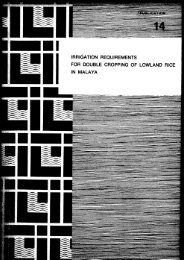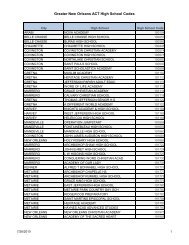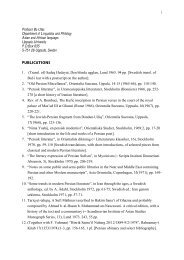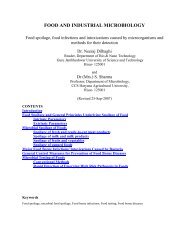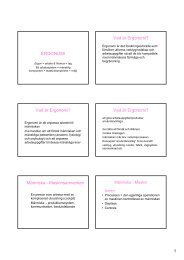On the Future of Indigenous Traditions - Munin
On the Future of Indigenous Traditions - Munin
On the Future of Indigenous Traditions - Munin
Create successful ePaper yourself
Turn your PDF publications into a flip-book with our unique Google optimized e-Paper software.
In <strong>the</strong> political nation here, <strong>the</strong> relation <strong>of</strong> an ethnic group or groups (formed <strong>of</strong><br />
“tribes”) to <strong>the</strong> national identity (formed <strong>of</strong> <strong>the</strong> caste society mainly) would give a<br />
sense <strong>of</strong> ethnic belonging to Adivasis. Contrastingly <strong>the</strong> sense <strong>of</strong> national identity (as<br />
equal Indian citizens) can only come when <strong>the</strong> ethnic group has <strong>the</strong> freedom <strong>of</strong> some<br />
level <strong>of</strong> self governance, i.e. <strong>the</strong> structural position <strong>of</strong> <strong>the</strong> modern India State vis-à-vis<br />
<strong>the</strong> Adivasi, parallel to <strong>the</strong> position <strong>of</strong> <strong>the</strong> English government vis-à-vis <strong>the</strong> Indian<br />
sub-continent during <strong>the</strong> colonial times.<br />
Within this frame if we look at Brass conception as referred by Prakash, this ethnic<br />
identity formation is a result <strong>of</strong> three sets <strong>of</strong> struggles between <strong>the</strong> state and <strong>the</strong><br />
society. 112<br />
1. The struggle within <strong>the</strong> ethnic group itself, for control over its own symbolic and<br />
material sources, which in turn involves defining <strong>the</strong> group’s boundaries and its rules<br />
<strong>of</strong> exclusion and inclusion. (In <strong>the</strong> case <strong>of</strong> Jharkhand struggle between “caste” and<br />
“tribe” both being put in to one national identity- Indian).<br />
2. The struggles between ethnic groups competing with one ano<strong>the</strong>r for rights,<br />
privileges and available resources. And, (again in <strong>the</strong> same as <strong>the</strong> case <strong>of</strong> Jharkhand<br />
struggle between “caste” and “tribe” both being put in to one national identity-<br />
Indian)<br />
3. The struggle between <strong>the</strong> state (– province’s authority) and <strong>the</strong> groups that<br />
dominate it (<strong>the</strong> non-Adivasis), on <strong>the</strong> o<strong>the</strong>r hand, and <strong>the</strong> population that inhabits its<br />
territory (Adivasis), on <strong>the</strong> o<strong>the</strong>r. 113 (i.e. <strong>the</strong> “caste” group that controls <strong>the</strong> state<br />
mechanism while <strong>the</strong> “tribe” that inhabits its territory)<br />
Each <strong>of</strong> <strong>the</strong>se sets <strong>of</strong> situation can be used both in <strong>the</strong> nation and state relation as well<br />
as within <strong>the</strong> state. Each <strong>of</strong> <strong>the</strong>se sets can also be seen separately to analyze <strong>the</strong> role <strong>of</strong><br />
<strong>the</strong> State vis-à-vis a selected ethnic groups or groups. At <strong>the</strong> same time <strong>the</strong>se three<br />
sets can never-<strong>the</strong>-less, intersect each o<strong>the</strong>r.<br />
112 Ibid., 8-9.<br />
113 Paul R. Brass, Ethnic Group and <strong>the</strong> State (Australia: Croom Helm Ltd., 1985), 1.<br />
73





